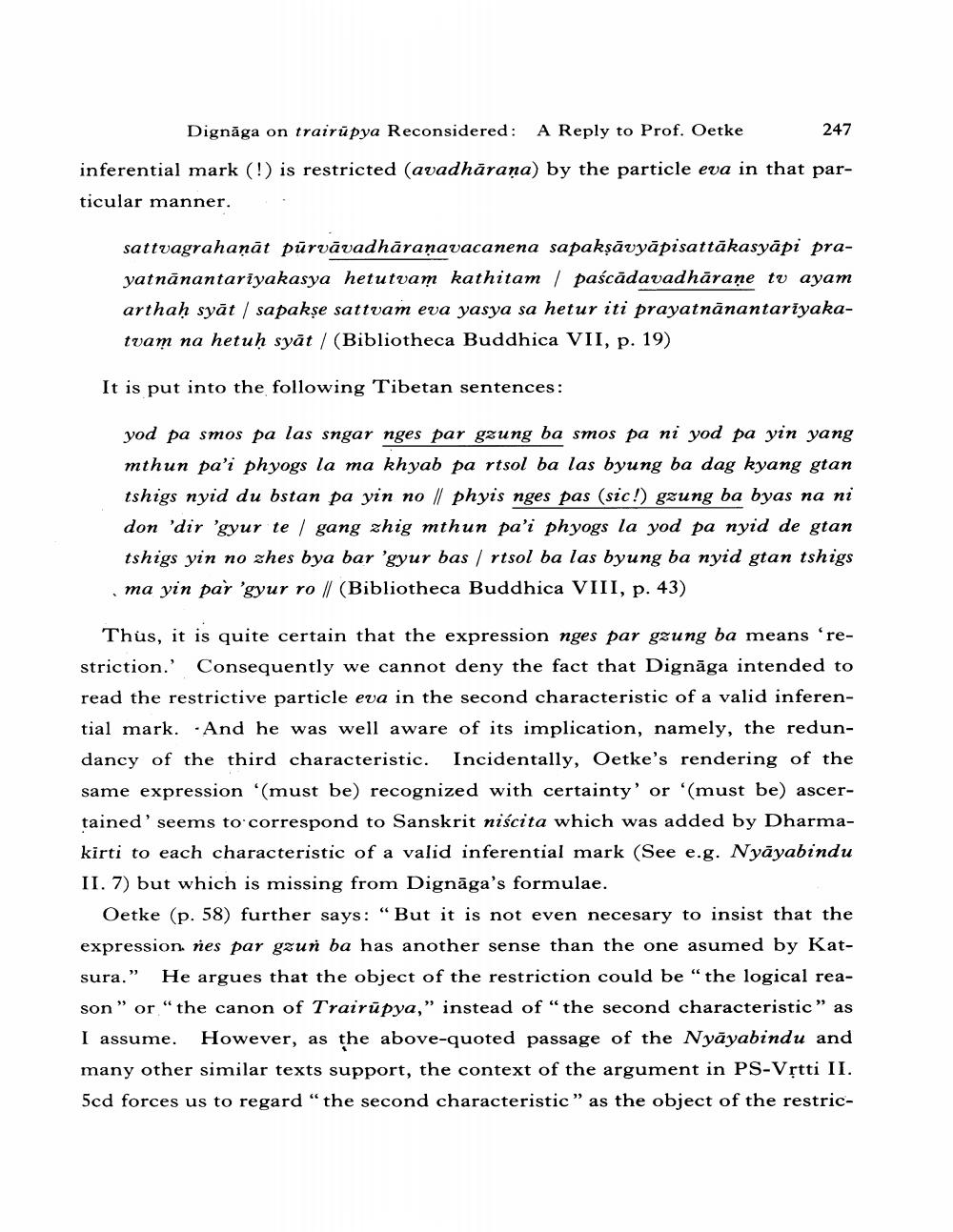Book Title: Dignaga On Trairupya Reconsidered Author(s): Shoryu Katsura Publisher: Shoryu Katsura View full book textPage 7
________________ Dignāga on trairūpya Reconsidered: A Reply to Prof. Oetke 247 inferential mark (!) is restricted (avadhāraņa) by the particle eva in that particular manner. sattvagrahaņāt pūrvāvadhāraṇavacanena sapakşāvyāpisattākasyāpi prayatnānantariyakasya hetutvam kathitam / paścādavadhāraṇe tv ayam arthaḥ syāt / sapakşe sattvam eva yasya sa hetur iti prayatnānantariyakatvam na hetuḥ syāt / (Bibliotheca Buddhica VII, p. 19) It is put into the following Tibetan sentences: yod pa smos pa las sngar nges par gzung ba smos pa ni yod pa yin yang mthun pa'i phyogs la ma khyab pa rtsol ba las byung ba dag kyang gtan tshigs nyid du bstan pa yin no / phyis nges pas (sic!) gzung ba byas na ni don 'dir 'gyur te / gang zhig mthun pa'i phyogs la yod pa nyid de gtan tshigs yin no zhes bya bar 'gyur bas / rtsol ba las byung ba nyid gtan tshigs ma yin par 'gyur ro (Bibliotheca Buddhica VIII, p. 43) Thus, it is quite certain that the expression nges par gzung ba means 'restriction.' Consequently we cannot deny the fact that Dignāga intended to read the restrictive particle eva in the second characteristic of a valid inferential mark. And he was well aware of its implication, namely, the redundancy of the third characteristic. Incidentally, Oetke's rendering of the same expression '(must be) recognized with certainty' or '(must be) ascertained' seems to correspond to Sanskrit niścita which was added by Dharmakirti to each characteristic of a valid inferential mark (See e.g. Nyāyabindu II. 7) but which is missing from Dignāga's formulae. Oetke (p. 58) further says: "But it is not even necesary to insist that the expression nes par gzun ba has another sense than the one asumed by Kat ura.” He argues that the object of the restriction could be “the logical reason" or "the canon of Trairūpya," instead of “the second characteristic" as I assume. However, as the above-quoted passage of the Nyāyabindu and many other similar texts support, the context of the argument in PS-Vștti II. 5cd forces us to regard “the second characteristic” as the object of the restricPage Navigation
1 ... 5 6 7 8 9 10 11 12 13 14 15 16 17 18 19 20 21 22 23 24 25 26
